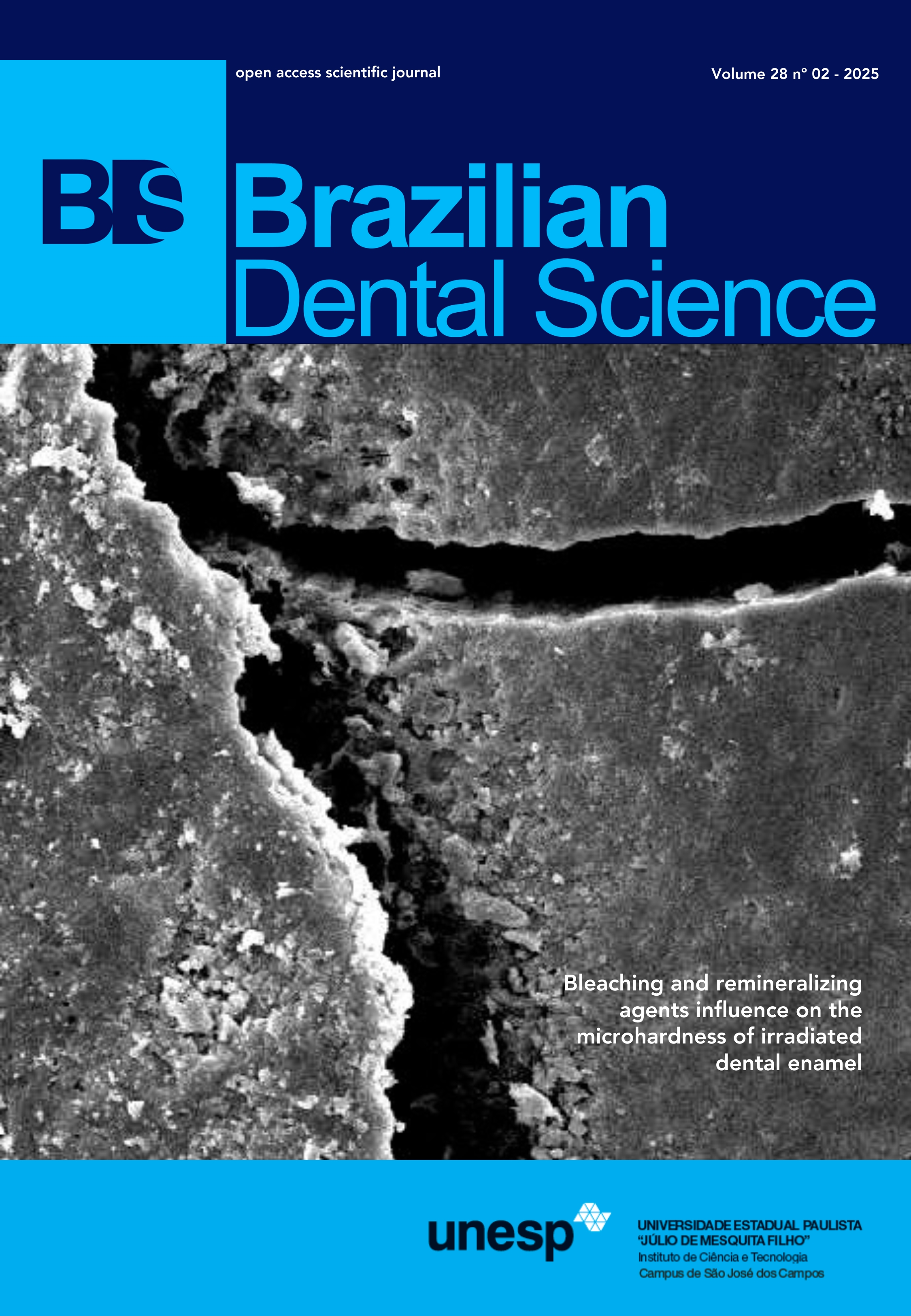Influence of fabrication methods on the flexural strength of two glass-ceramics with different chromas
DOI:
https://doi.org/10.4322/bds.2025.e4674Abstract
Objective: To investigate whether different methods of preparing the specimens for three-point flexural strength testing influence the flexural strength values of lithium disilicate (LD) and zirconia-reinforced lithium silicate (ZLS) of two chromas (A1 and A3). Also, to qualitatively assess differences in their fractographic patterns. Material and Methods: LD (IPS e.max CAD) and ZLS (Celtra Duo) specimens in chromas A1 and A3 were either cut using a diamond-coated disc directly to ISO 6872-specified dimensions (4 × 2 × 14mm) for three-point flexural strength tests, or cut with 1-mm extra thickness (4 × 3 × 14mm), and then subjected to thickness reduction with 45μm sandpaper in a polishing machine until reaching the same final dimension (8 groups, n=10). Flexural strength testing was conducted in an aqueous environment, and fractured surfaces were examined qualitatively. Flexural strength values (MPa) were analyzed using three-way ANOVA and Bonferroni post-hoc tests (α = 0.05). Results: LD exhibited higher flexural strength than ZLS across all conditions. Thickness reduction decreased flexural strength in LD A1 but improved it in ZLS A3, with no significant effect on LD A3 or ZLS A1. No significant difference was observed between the strength of A1 and A3 specimens within the same material. Fractographic analysis revealed altered fracture patterns in LD A1 and ZLS A3 following thickness reduction. Conclusion: The method of specimen preparation can significantly influence flexural strength values depending on the material and shade. These findings highlight that even subtle variations in preparation can lead to inconsistent outcomes, emphasizing the urgent need for more detailed and rigorous standardization of mechanical testing protocols in ISO 6872.
KEYWORDS
Ceramics; Dental materials; Dental polishing; Dental porcelain; Flexural strength.
Downloads
Downloads
Published
How to Cite
Issue
Section
License
Copyright (c) 2025 Brazilian Dental Science

This work is licensed under a Creative Commons Attribution 4.0 International License.
Brazilian Dental Science uses the Creative Commons (CC-BY 4.0) license, thus preserving the integrity of articles in an open access environment. The journal allows the author to retain publishing rights without restrictions.
=================




























